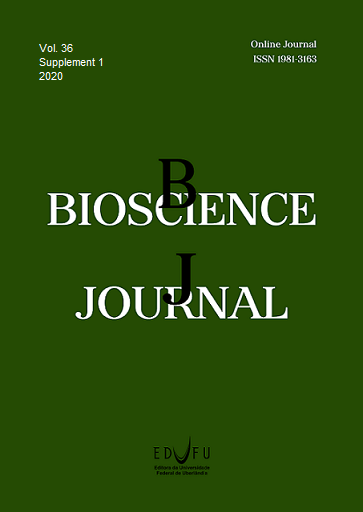Corynespora cassiicola in soybean seeds – incidence and transmission
DOI:
https://doi.org/10.14393/BJ-v36n0a2020-45550Keywords:
Seed pathology, Target spot.Abstract
The fungus Corynespora cassiicola, causal agent of target spot in soybeans, has been considered, from the seed pathology point of view, a seed-borne pathogen of limited importance. Therefore, little importance has been given to the role of the seeds in the transmission of this pathogen. The objectives of this study were to determine the incidence of C. cassiicola in soybean seeds and evaluate the effects of this seed-borne pathogen, inoculated in the seeds, in relation to physiological and epidemiological parameters. The experiments were carried out at TAGRO and Embrapa Western Agriculture under lab (blotter test and seed germination test) and greenhouse conditions (growing on test). The fungus C. cassiicola was detected in 11.3% of the 639 seed samples analyzed, with an average incidence of 0.91% and maximum of 8.5%. The transmission of C. cassiicola from the seeds to above-ground parts of soybean seedlings was demonstrated, by pathogen establishment on the cotyledon, showing circular lesions with concentric rings, reddish-brown in the center and surrounded by a yellowish green halo, as a typical symptoms of target spot. Reddish-brown lesions on the roots and stem of the seedlings were also observed. Considering a sample seed with 66.0% of C. cassiicola incidence, the symptomatic transmission based on cotyledon symptoms was 42.2%, corresponding to a transmission rate of 2.4:1. This is the first report, in a quantified way, about the transmission of C. cassiicola from the seeds to above-ground parts of soybean seedlings. When compared to non-inoculated seeds, seed germination, seedling emergence and seedling initial development were influenced by the presence of the pathogen in the seeds, with the lowest values being observed when the seeds were inoculated.
Downloads
Published
Issue
Section
License
Copyright (c) 2020 Augusto César Pereira Goulart, Carlos Mitinori Utiamada

This work is licensed under a Creative Commons Attribution 4.0 International License.





